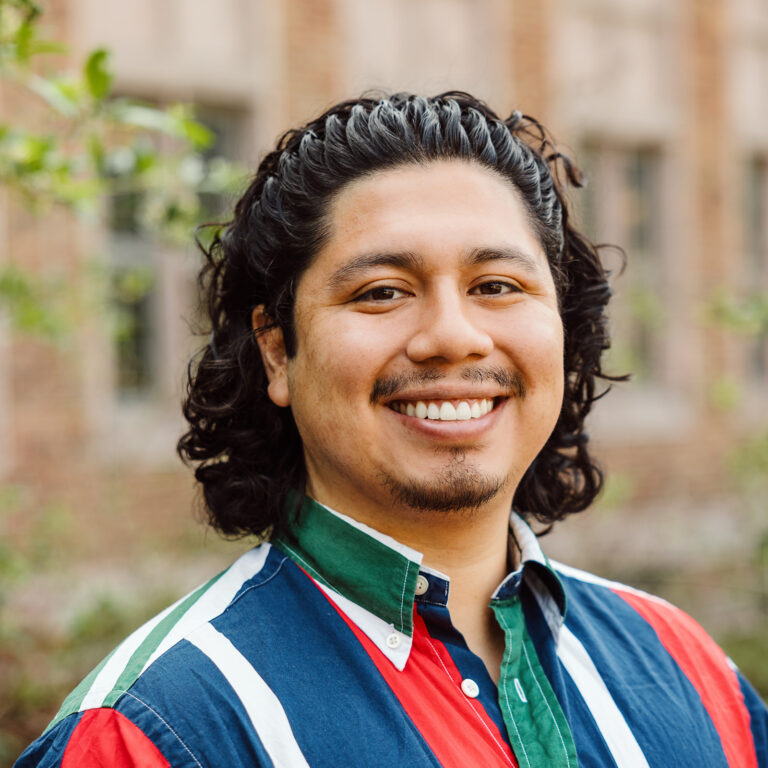Research Affiliate
Mel Chafart is a Researcher at the UW, primarily focused on researching Whole Building Life Cycle Assessments. Prior, Mel was a structural engineer at Buro Happold. There, he assisted in the design of steel and concrete structures in the US and abroad. He has worked on projects from concept design through construction administration. On the embodied carbon side, Mel has deep experience performing embodied carbon assessments and helped Buro Happold build out their portfolio of benchmarked projects. Outside of work, he enjoys watching soccer and baseball, woodworking, gardening, and tinkering with Raspberry Pis.
by Mel Chafart
I have been a structural engineer for more than five years now. I got my first full-time job at Buro Happold in New York City, where I worked on big projects like the Mercedes Benz Stadium in Atlanta and the Hudson’s Tower in Detroit. And in March 2023, I passed my PE exam and am well on my way to being a licensed engineer. But my fascination with building things stems back decades – back to when I was a kid tinkering with Legos on my bedroom floor. These tiny plastic blocks have been known to create some pretty incredible things, and as a kid, I was obsessed. My parents, recognizing a life hack when they saw one, supplied me with as many opportunities to build as they could.
I think what stuck with me most was that I was building my own toys, from 1,000+ piece Star Wars sets to custom cars made from extra blocks and spare pullback motors. I remembered how much fun it was making, using, and sharing them with my friends, and as I got older, I found myself captivated by the field of architecture because it felt like the closest thing to building Legos. I pursued my studies in structural engineering, and as I began to deepen my understanding of the built environment, I found that this industry was not only a chance for me to design and create, but also to build lasting objects. I wanted to help create things like houses, museums, or stadiums, things that are useful and bring people happiness.
But as I spent more time in the construction industry, I learned about its potentially harmful impacts. I couldn’t stop thinking about it. Amid recent climate marches and the torrent of devastating natural disasters, I learned that building materials account for 8% of global emissions. I started using the EPA’s Greenhouse Gas Equivalencies Calculator, the structural engineer’s version of doom scrolling. I would calculate the impact of different projects I worked on and watch the numbers go up and up. I felt complicit.
I began to look into ways I could make a difference and reduce my impact on the environment. So, I dug in, learned about Life Cycle Assessments, and helped Buro Happold benchmark their existing US portfolio. I co-developed scripts and platforms to assess embodied carbon in early stages of design, all while trying my best to learn and share best practices with whoever I could.
My transition to working at the Carbon Leadership Forum has me feeling very lucky. For several years now, this organization has been my go-to source for information on embodied carbon. I watched the Wood Carbon Seminar over Christmas break in 2020. I read the WBLCA Benchmarking Study while undertaking embodied carbon assessments for Buro Happold, and I used that to guide my work.
Now, I’m excited to be on the other end, helping to build tools that architects and engineers can use to measure and ultimately reduce the embodied carbon on their buildings. In what feels like a real full circle moment, I am especially excited to contribute to an updated WBLCA Benchmarking Study, a project that can have a positive influence on future policy around the country. CLF has been transformative for my career, and I believe our work here can be transformative for the industry as a whole
Everyone has a part to play in reducing the effects of climate change. Even Legos has released their own Sustainability Plan — and if Legos can do their part to combat the climate crisis, so can I. At CLF, I am excited to help change my field for the better, and I can’t wait to get started.

Ziplining in Ecuador

Mel Chafart